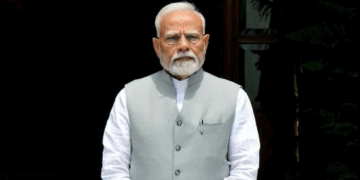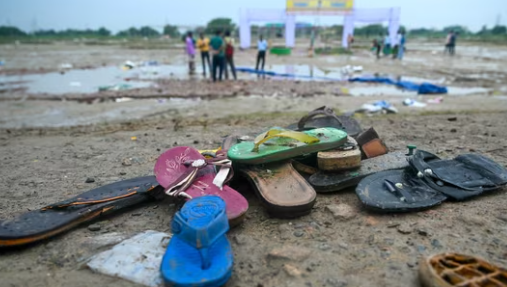The recent stampede at a temple festival in Hathras, Uttar Pradesh, has claimed multiple lives, with the autopsy report revealing that chest injuries and asphyxia were among the primary causes of death. The tragic incident occurred during a religious gathering at the well-known Balaji temple, where a sudden rush of devotees led to the fatal stampede.
According to the autopsy report, several victims succumbed to severe chest injuries and asphyxia, a condition caused by a lack of oxygen due to overcrowding and trampling. The report highlights the dire need for better crowd management and safety protocols at large public gatherings.
“The primary causes of death among the victims were chest injuries and asphyxia. The injuries were consistent with those sustained during a stampede, where excessive pressure on the chest can lead to suffocation and internal damage,” stated Dr. Suresh Kumar, the lead forensic pathologist at the district hospital.
The stampede occurred during the annual Balaji temple festival, which attracts thousands of devotees from across the region. Witnesses reported that a sudden surge in the crowd led to panic, causing people to fall and be trampled underfoot. Local authorities struggled to manage the situation, resulting in multiple casualties and injuries.
Uttar Pradesh Chief Minister Yogi Adityanath expressed his condolences to the families of the victims and ordered a thorough investigation into the incident. “We are deeply saddened by the loss of lives in Hathras. The administration has been directed to provide all necessary support to the affected families and ensure that such incidents do not recur,” he stated.
The Chief Minister also announced compensation for the families of the deceased and assured that the injured would receive adequate medical care.
The stampede has sparked a public outcry, with many calling for stricter safety measures at large gatherings. Activists and community leaders have emphasized the need for better crowd control and emergency preparedness to prevent such tragedies in the future.
“This tragic incident underscores the urgent need for comprehensive safety protocols at public events. Authorities must take proactive measures to ensure the safety of devotees and prevent overcrowding,” said social activist Meera Devi.
In the wake of the incident, local authorities have promised to review and improve safety measures at future events. The district administration has announced plans to implement stricter crowd management strategies, including increased security personnel, designated entry and exit points, and better communication systems to manage large gatherings effectively.
The Hathras stampede serves as a grim reminder of the potential dangers associated with mass gatherings and the critical importance of ensuring public safety. As investigations continue, the focus remains on providing support to the affected families and implementing measures to prevent similar incidents in the future.








 India
India












